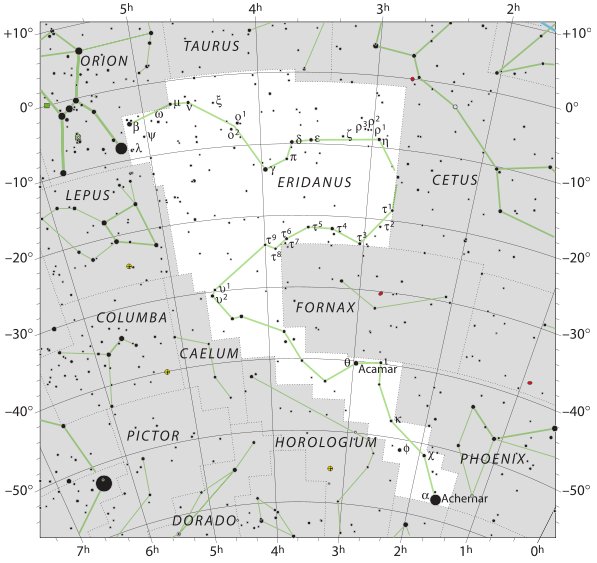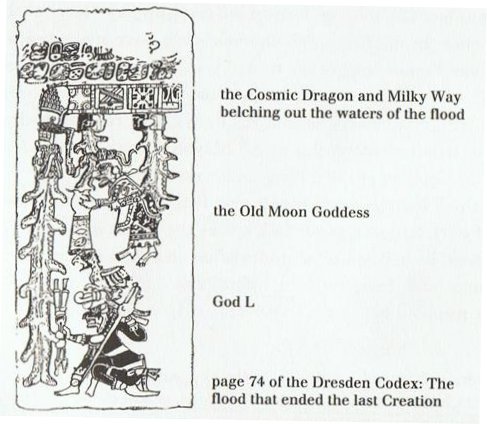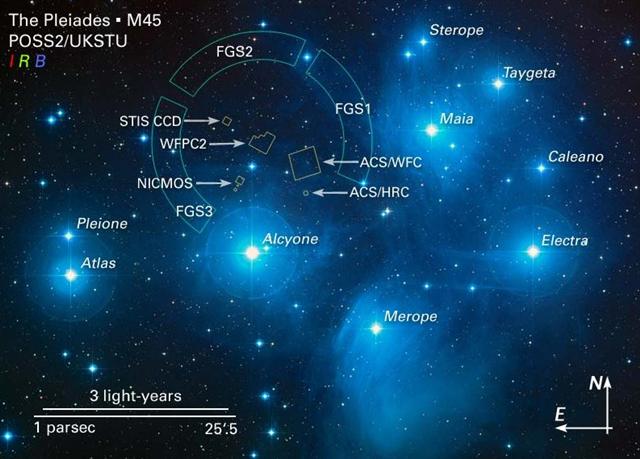325. To repeat:
When the Explorers (excepting Kuukuu who had been carried down into a cave and Makoi who would stay behind) sailed away from Easter Island in order to return home to Hiva a message was shouted at them from Makoi:
... When Ira's canoe reached the islets (off the southwestern coast), Makoi (who was staying behind) shouted the following (after him): Eight lands (are there), one has been found (or, an eighth land has been found for the first time, evaru kainga katahi i revaa), that is, Te Pito O Te Kainga. During the fast journey, one cannot find the seven lands in the midst of dim twilight. Once (Easter Island) has been lost, not even eight groups of people (i.e., countless boat crews) can find (it) again. - Ruhi to the right, Pu to the left, necklace around the neck of Hinariru at Papa O Rae! (E:86)
This was documented on page 86 in Manuscript E, i.e. on page 73 + 13. If page number 73 had been chosen for alluding to March 14 (3-14), which seems possible because here Oto Uta was left behind when the emigrant canoe was launched (i.e. left Land),
... At the time of the loading of the emigrant canoe, Hotu Matua ordered his assistant Teke to take a (stone) figure (moai) named Oto Uta on board the canoe, along with the people (aniva) who were emigrating. However, the figure was 'left behind out in the bay' (E:73)
then we could try to move ahead in the text from MARCH 14 (73) - when Porrima was culminating - to day 73 + 13 = 86 (MARCH 27). And then we should be adding 183 days in order to also move to an observer point south of the equator, resulting in 86 + 183 = 269 (SEPTEMBER 26), and finally we could transform to a time frame *23 (= *64 - *41) right ascension days later: 269 + 23 = 292 (Tangaroa Uri 19) = 4 * 73.
73 → 3-14 and 86 → 4 * 73 = 365 - 73.
If MARCH 14 was alluded to in page E:73 we could use the last part of side b on the G tablet as a rather well-known frame of reference and then we will immediately find a suitable boat (Zaurak) resting in the Eridanus river, which could have motivated the creators of Manuscript E to let the emigrant canoe be mentioned on page 73:
| 2-27 (73 - 15) |
2-28 |
3-1 (60) |
3-2 |
3-3 |
3-4 |
3-5 |
| MARCH 14 (73) |
15 |
(365 + 75 = 440) |
17 |
18 |
19 |
20 (*364) |
 |
 |
 |
 |
 |
 |
 |
| Gb8-24 |
Gb8-25 (466) |
Gb8-26 |
Gb8-27 |
Gb8-28 |
Gb8-29 |
Gb8-30 (242) |
| MENKHIB (Next to the Pleiades = ζ Persei (57.6)
PORRIMA (γ Virginis)
|
ZAURAK (The Boat) = γ Eridani (58.9) |
λ Tauri (59.3), ν Tauri (59.9) |
4h (60.9) JĪSHUĬ = λ Persei (60.7)
COR CAROLI (α Canum Ven.)
|
υ Persei (61.2) |
BEID (Egg) = ο¹ Eridani (62.2), μ Persei (62.8) VINDEMIATRIX ( ε Virginis) |
Al Dabarān-2 (The Follower) HYADUM I = γ Tauri (63.4) |
| May 17 (137) |
18 (*58) |
19 (*424) |
20 |
21 |
22 |
23 (*428) |
| °May 13 |
14 (*54) |
15 (*420) |
16 (136) |
17 |
18 (*58) |
19 (*424) |
| 'April 20 |
21 (111) |
22 |
23 |
24 |
25 (*400) |
26 (*36) |
| "April 6 |
7 |
8 |
9 (464) |
10 (100) |
11 |
12 (*22) |
The letter γ was perhaps designed to look like an inverted λ - as if indicating where the dark cloth of night was drawn aside. The corresponding place on side b of the C tablet should be:
| 2-28 |
3-1 |
3-2 (61) |
|
... The leap day was introduced as part of the Julian reform. The day following the Terminalia (February 23) was doubled, forming the 'bis sextum - literally 'double sixth', since February 24 was 'the sixth day before the Kalends of March' using Roman inclusive counting (March 1 was the 'first day'). Although exceptions exist, the first day of the bis sextum (February 24) was usually regarded as the intercalated or 'bissextile' day since the third century. February 29 came to be regarded as the leap day when the Roman system of numbering days was replaced by sequential numbering in the late Middle Ages. |
| MARCH 15 (74) |
16 |
17 |
 |
 |
 |
| Cb2-8 (424 = 392 + 32) |
Cb2-9 |
Cb2-10 |
| Niu |
moe te goe |
| ZAURAK (The Boat) = γ Eridani (58.9) |
λ Tauri (59.3), ν Tauri (59.9) |
4h (60.9) JĪSHUĬ (Piled-up Waters) = λ Persei (60.7)
COR CAROLI (α Canum Ven.)
|
 |
| 3-3 |
3-4 (63 = 79 - 16) |
3-5 (79 - 15) |
12 |
| MARCH 18 |
19 (*364) |
20 (79) |
 |
 |
 |
| Cb2-11 (392 + 35 = 427) |
Cb2-12 (428 = 444 - 16) |
Cb2-13 |
| ka moe i roto |
te henua |
ihe manu ra |
| υ Persei (61.2) |
BEID (Egg) = ο¹ Eridani (62.2), μ Persei (62.8)
VINDEMIATRIX ( ε Virginis) |
Al Dabarān-2 (The Follower)
HYADUM I = γ Tauri (63.4) |
|
... The chief thus makes his appearance at Lakeba from the sea, as a stranger to the land. Disembarking at the capital village of Tubou, he is led first to the chiefly house (vale levu) and next day to the central ceremonial ground (raaraa) of the island ... (Islands of History)
 |
| raaraa |
|
| 3-18 (58 + 19 = 77) |
3-19 |
3-20 (79 = 78 + 1) |
3-21 (0h) |
|
... Ecclesiastically, the equinox is reckoned to be on 21 March (even though the equinox occurs, astronomically speaking, on 20 March in most years) ... |
| APRIL 2 (73 + 19 = 92) |
3 |
4 (72 + 22 = 94) |
5 (95 = 5 * 19) |
 |
 |
 |
 |
| Cb3-1 (50) |
Cb3-2 |
Cb3-3 (392 + 52 = 444) |
Cb3-4 |
| E vae ra - ka oho - ki te henua - kua huki |
ku kikiu - te henua |
ko te henua - te rima |
e kava |
| 5h (76.1)
ε Leporis (76.0), CURSA = β Eridani (76.4), λ Eridani (76.7) |
μ Aurigae, μ Leporis (77.6) |
ĸ Leporis (78.0), RIGEL (Foot) = β Orionis (78.1), Flaming Star = IC405 (78.2), CAPELLA (Mother Goat) = α Aurigae (78.4), ο Columbae, τ Orionis (78.8)
THUBAN (α Draconis)
|
λ Aurigae (79.0), λ Leporis (79.6), ρ Aurigae (79.7)
ARCTURUS (α Bootis)
|
 |
| June 5 (156) |
6 |
7 |
8 |
| °June 1 (152) |
2 |
3 |
4 |
| 'May 9 (129) |
10 |
11 |
12 |
| Vaitu Nui 25 (115) |
"April 26 |
27 |
28 |
| CLOSE TO THE FULL MOON: |
| Mula-19 (The Root)
SABIK (The Preceding One) = η Ophiuchi (259.7), η Scorpii (259.9) |
NODUS I = ζ Draconis (260.0), π Herculis (260.7), RAS ALGETHI = α Herculis (260.8) |
SARIN = δ Herculis (261.0), ο Ophiuchi (261.4 = 41.4 + 220)
ALRISHA (α Piscium)
|
ξ Ophiuchi (262.2), θ Ophiuchi, ν Serpentis, ζ, ι Apodis (262.4), ι Arae (262.8), ρ Herculis (262.9) |
| Tagaroa Uri 25 (298) |
"Oct 26 |
27 (*261.4 - *41.4 + 80) |
28 (301) |
| Dec 5 (339) |
6 |
7 |
8 |
| °Dec 1 (335) |
2 |
3 |
4 |
| 'Nov 8 (312) |
9 |
10 |
11 |
| OCT 2 (275 = 339 - 64) |
3 |
4 |
5 |
| 9-17 (260 = 339 - 79) |
9-18 |
9-19 |
9-20 (263 = 80 + 183) |
Therefore the emigrant canoe could have sailed away from the right ascension time line defined by Alcyone (The Foundation Stone, Temennu)
... another Alcyone, daughter of Pleione, 'Queen of Sailing', by the oak-hero Atlas, was the mystical leader of the seven Pleiads. The heliacal rising of the Pleiads in May marked the beginning of the navigational year; their setting marked its end when (as Pliny notices in a passage about the halcyon) a remarkably cold North wind blows ...
as observed close to the Full Moon in "October 7 (Tangaroa Uri 7) - because the Canoe (Zaurak) came in day 4 after te ua when the Heart of the (Water) Serpent was at the Full Moon. Page 74 in the Dresden Codex could have alluded to 2-28 via MARCH 15 (74):

| 2-24 (420 = 6 * 70) |
2-25 |
2-26 |
2-27 (58) |
| MARCH 11 |
12 (436) |
13 (72 = 360 / 5) |
3-14 (73 = 58 + 15) |
 |
 |
 |
 |
| Cb2-4 (420 = 7 * 60) |
Cb2-5 (29) |
Cb2-6 |
Cb2-7 (58 - 27 = 31) |
| te ua |
koia ra |
kua tuku ki to mata - ki tona tukuga |
e kiore - henua - pa rei |
| δ Persei (54.7) |
Al Thurayya-27 (Many Little Ones) / Krittikā-3 (Nurses of Kārttikeya) / TAU-ONO (Six Stones)
ATIKS = ο Persei, RANA (Frog) = δ Eridani (55.1), CELAENO (16 Tauri), ELECTRA (17), TAYGETA (19), ν Persei (55.3), MAIA (20), ASTEROPE (21), MEROPE (23) (55.6) |
Hairy Head-18 (Cockerel) / Temennu-3 (Foundation Stone)
ALCYONE (56.1), PLEIONE (28 Tauri), ATLAS (27 Tauri) (56.3) |
MENKHIB (Next to the Pleiades) = ζ Persei (57.6)
PORRIMA (γ Virginis)
|
 |
| May 14 (*378 + 41 = *419) |
15 (500 = 365 + 135) |
16 (136) |
17 |
| 'April 17 (107) |
18 |
19 |
20 (*30) |
| Tehetu'upú 16 (*378) |
"Febr 17 (459 = 500 - 41) |
18 (95 = 136 - 41) |
19 |
| CLOSE TO THE FULL MOON: |
| κ Librae (237.2), ι Serpentis (237.4), ψ² Lupi, ρ Oct. (237.5), γ Cor. Borealis, η Librae (237.7), COR SERPENTIS = α Serpentis (237.9) |
π Cor. Borealis, UNUK ELHAIA (Necks of the Serpents) = λ Serpentis (238.1), CHOW = β Serpentis (238.6) |
κ Serpentis (239.3), δ Cor. Borealis, TIĀNRŪ = μ Serpentis (239.5), χ Lupi, (239.6), ω Serpentis (239.7), BA (= Pa) = ε Serpentis, χ Herculis (239.8). κ Cor. Borealis, ρ Serpentis (239.9) |
λ Librae (240.0), β Tr. Austr. (240.3), κ Tr. Austr. (240.4), ρ Scorpii (240.8) |
|
... The Mahabharata insists on six as the number of the Pleiades as well as of the mothers of Skanda and gives a very broad and wild description of the birth and the installation of Kartikeya 'by the assembled gods ... as their generalissimo', which is shattering, somehow, driving home how little one understands as yet. The least which can be said, assuredly: Mars was 'installed' during a more or less close conjunction of all planets; in Mbh. 9.45 (p. 133) it is stressed that the powerful gods assembled 'all poured water upon Skanda, even as the gods had poured water on the head of Varuna, the lord of waters, for investing him with dominion'. And this 'investiture' took place at the beginning of the Krita Yuga, the Golden Age ... |
| Nov 13 (*237) |
14 |
15 |
16 (320 = 241 + 79) |
| 'Oct 17 (290) |
18 |
19 |
20 (*213 = *240 - *27) |
| "Oct 3 (276) |
4 |
Tagaroa Uri 5 |
6 (*199 = *240 - *41) |
| SEPT 10 (*173) |
11 |
12 |
13 (256 = 320 - 64) |
| 8-26 |
8-27 (239 - 79 = 160) |
8-28 (240 = 255 - 15) |
8-29 |
|
... The correspondence between the winter solstice and the kali'i rite of the Makahiki is arrived at as follows: ideally, the second ceremony of 'breaking the coconut', when the priests assemble at the temple to spot the rising of the Pleiades, coincides with the full moon (Hua tapu) of the twelfth lunar month (Welehu). In the latter eighteenth century, the Pleiades appear at sunset on 18 November. Ten days later (28 November), the Lono effigy sets off on its circuit, which lasts twenty-three days, thus bringing the god back for the climactic battle with the king on 21 December, the solstice (= Hawaiian 16 Makali'i). The correspondence is 'ideal' and only rarely achieved, since it depends on the coincidence of the full moon and the crepuscular rising of the Pleiades ... |
In Manuscript E it is stated that the canoe of Hotu A Matua sailed away in Hora Nui 2 (245) and this place could have coincided with a position 3 days after 8-30 (where Zaurak was at the Full Moon). Notably the day number of 8-30 was 242 which 'happened to' coincide with the number of glyphs on side b of the G tablet. 471 = 229 + 242. No detail was irrelevant, nothing could be arbitrary in a cosmos, in the sacred world of the mind.
| 3-3 |
3-4 (63 = 79 - 16) |
3-5 (79 - 15) |
| MARCH 18 |
19 (*364) |
20 (79) |
 |
 |
 |
| Cb2-11 (392 + 35 = 427) |
Cb2-12 (428 = 444 - 16) |
Cb2-13 |
| ka moe i roto |
te henua |
ihe manu ra |
| υ Persei (61.2) |
BEID (Egg) = ο¹ Eridani (62.2), μ Persei (62.8)
VINDEMIATRIX ( ε Virginis) |
Al Dabarān-2 (The Follower)
HYADUM I = γ Tauri (63.4) |
|
... The chief thus makes his appearance at Lakeba from the sea, as a stranger to the land. Disembarking at the capital village of Tubou, he is led first to the chiefly house (vale levu) and next day to the central ceremonial ground (raaraa) of the island ... (Islands of History)
 |
| raaraa |
|
| SEPT 17 |
18 |
19 |
| 9-2 (→ Hora Nui 2) |
9-3 |
9-4 |

|
















